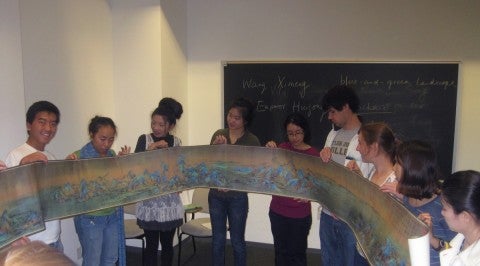"Girih Tiles: Modern Math in Medieval Islamic Architecture"
The conventional view holds that geometric star-and-polygon patterns adorning medieval Islamic architecture were designed using a straightedge and a compass, and derived from ancient Greek mathematical techniques. However, I have found a wide variety of patterns throughout the medieval Islamic world with five- and ten-fold symmetric motifs, instead conceived as tessellations of specific decorated polygons, called girih tiles. These specific tiles appear in architectural scrolls from the 15th century, which emerged in the context of dialogs between architects and mathematicians and documented practical architectural techniques in use at the time. The girih tiles were used like puzzle pieces to design a large number of geometric tiling patterns in architecture, beginning with 12th-century architectural monuments in the Anatolian Seljuk cultural context, in what is today western Iran, eastern Turkey and Armenia. Interestingly, perhaps half of the extant Seljuk buildings with girih-tile tesselations had female sponsors, patrons or dedications---hinting at an important contribution from women that has not been previously explored adequately. Subsequently, these girih-tile tessellations spread throughout the medieval Islamic world, from North Africa to the Middle East and Central Asia, for half a millennium. Remarkably, in a few cases, these girih-tile tessellations exhibit mathematical principles of quasicrystallinity, that we in the West did not understand until the past few decades in the form of Penrose tilings.
=====
Peter J. Lu received his AB summa cum laude in physics (2000) from Princeton University, and AM (2002) and PhD (2008) in physics from Harvard University. He subsequently worked as a post-doctoral research fellow in the Department of Physics at Harvard University, where he focused is on the physics of attractive colloids and conducted a series of experiments aboard the Intl Space Station; integration of high-performance imaging and computation techniques; and microbial genomics of the human gut microbiome. He has also published his discoveries of modern quasicrystal geometry in medieval Islamic architectural tilings; the first precision compound machines, from ancient China; the first use of diamond, in prehistoric China; and the first quasicrystalline mineral found in nature.
=====
[Image: Mama Hatun mausoleum, Tercan, Turkey; Girih-tile tessellation, five-pointed star with calligraphy and female patron; Photo: Peter J. Lu]

